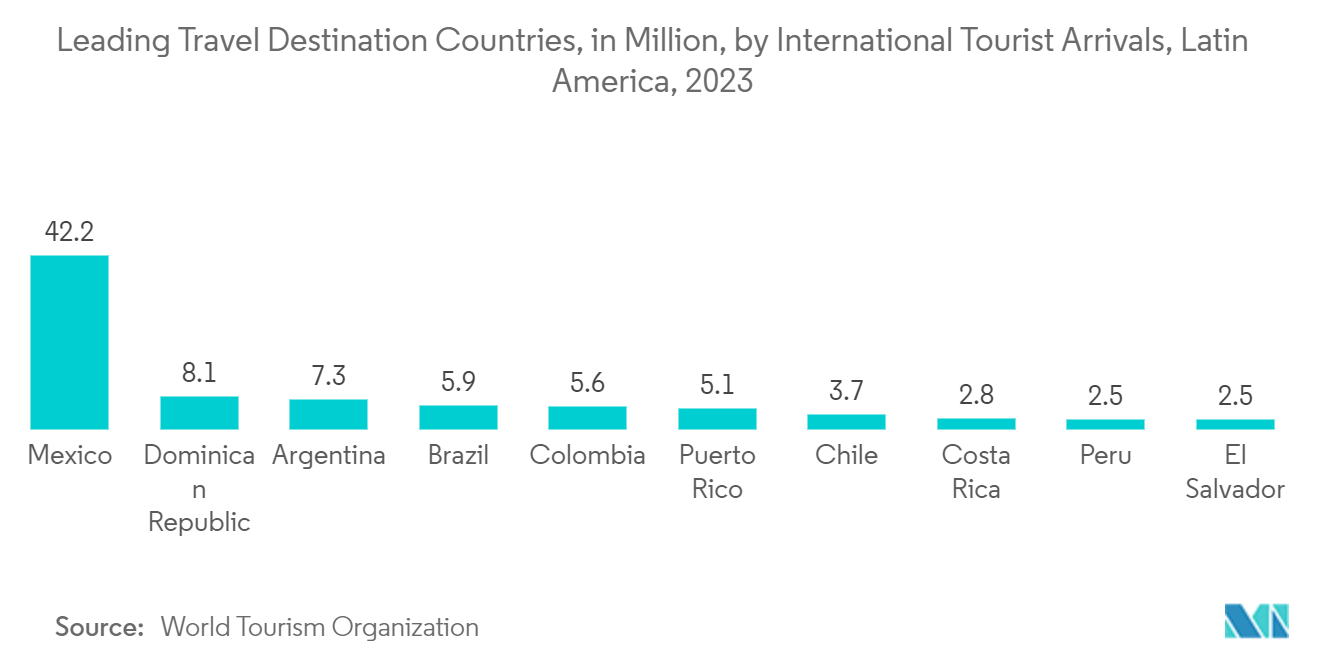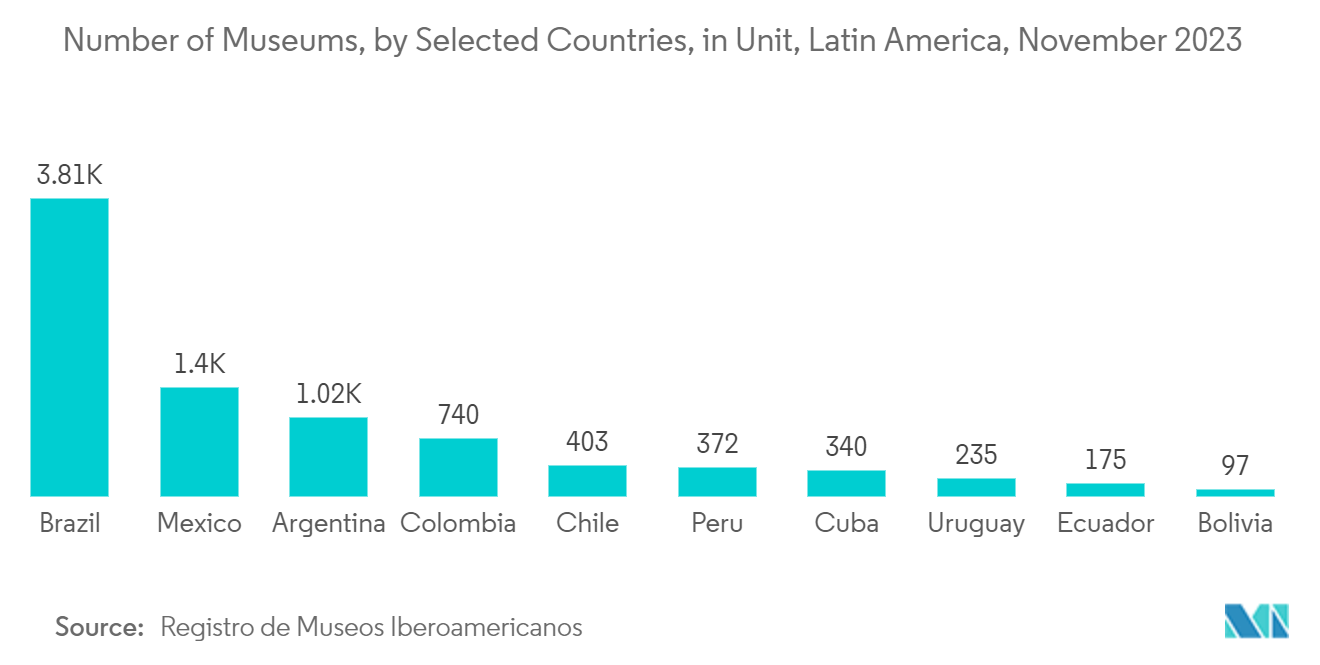Market Trends of Latin America Immersive Entertainment Industry
The Themed Entertainment Segment is Expected to Hold a Significant Share in the Market
- Virtual reality (VR) technology is reshaping the theme park industry. Theme parks are not only enhancing their current attractions with VR but are also introducing stand-alone VR rides. While traditional theme parks pour millions into VR tech to boost attendance, some organizations are going a step further by investing billions to create dedicated VR theme parks. Beyond just VR theme parks and amusement parks, technology is making waves elsewhere. Travel agencies, shopping malls, and clothing retailers are leveraging VR to offer visitors and tourists captivating experiences.
- Moreover, Hello Park LLC, an immersive park chain, partnered with the StarParks division of Brazil's GSJ Group, which owns the country's largest indoor amusement park, Parque de Monica. Together, they inaugurated the world's largest digital theme park for children in Sao Paulo. This park marks the 21st addition to the Hello Park chain, spanning 1,500 sq.m, with 1,300 meters dedicated to interactive experiences. The park boasts over 20 immersive zones. Additional features include a family cafe, interactive rooms for family celebrations, and a merchandise store.
- Theme entertainment parks increasingly prioritize sustainability, integrating eco-friendly practices into their designs and operations. Additionally, attractions centered around beloved franchises from film, television, and games are reshaping the thematic entertainment landscape. These elements elevate the guest experience, boost visitor engagement, encourage repeat visits, and foster brand loyalty. The theme park market is poised for a transformative future, with top brands continually pushing creative and innovative boundaries.
- In July 2024, DOF Robotics, known for its dynamic simulation platforms, unveiled its latest attraction, The Flying Theater, in Guadalajara, Mexico. This cutting-edge attraction elevates the thrill and immersion levels, transforming the entertainment experience for all visitors. Accommodating up to 40 guests, this flying theater ensures an exhilarating experience, even for those sensitive to motion and spatial changes. As guests' seats are smoothly elevated toward a vast domed screen, they are made to feel as if they're gliding over captivating landscapes and thrilling scenarios.
- The rise in the number of tourists in the region would create an opportunity for the market players to establish immersive entertainment locations in the region. For instance, according to the World Tourism Organization, in 2023, Mexico emerged as the leading destination for international tourists in Latin America, attracting over 42 million arrivals. The Dominican Republic secured the second spot, albeit at a considerable distance.

Brazil is Expected to Hold a Significant Share
- Brazil is poised for rapid growth, driven by its rich cultural heritage and history. This backdrop creates an ideal setting for innovative immersive technologies in venues like museums, theaters, and heritage sites. Such technologies elevate visitor experiences, providing unique and interactive engagements with cultural and historical artifacts. Furthermore, Europe's proactive investment in technological infrastructure and the rising acceptance of these advanced experiences among its consumers further bolster the region's potential for significant market growth.
- The primary drivers of the Brazilian market are the rising population spending on outdoor activities and the use of 3D technology at entertainment locations offering a realistic experience. Moreover, the growth can be credited to a rise in the consumer inclination toward arcade studios, amusement parks, and 4D films as a part of leisure. Also, a rise in disposable incomes, rapid urbanization, and an increase in international tourism are driving the growth of the immersive entertainment market.
- Across various cities, immersive entertainment is drawing packed crowds. From Meow Wolf's interactive psychedelic fun houses to Dreamscape's full-roam multiplayer VR adventures and the immersive Van Gogh exhibits, a burgeoning 'experience economy' is taking shape. This economy melds traditional artistry with innovative immersive experiences, hinting at potential transformations for malls, museums, and theme parks. Their vision extends beyond individual events, as they are establishing networks of venues primed for future immersive showcases.
- Furthermore, with the proliferation of technologies such as AI, ML, and IoT also growing in the AR/VR industry, the use cases and capabilities of the technologies are anticipated to expand further, creating a growth outlook during the forecast period. For instance, incorporating AI components, such as ontology and deep learning, into AR/VR can improve these several strategies. For example, the artificial intelligence algorithm can be applied to augmented/virtual reality to offer users improved interactions with their physical environment. AI algorithms can also collect more detailed data from multiple complementary AR/VR sensors, such as GPS and gyroscopes. Additionally, AI can be used with immersive technologies to offer better mobile experiences by enhancing smartphone speech recognition, object detection, and image tracking.
- According to Registro de Museos Iberoamericanos, as of November 2023, Brazil boasted approximately 3,800 museums, leading all major Latin American countries. Mexico had over 1,200 museums, while Argentina followed with 1,017 cultural centers. Such a huge number of museums in the country is expected to propel the studied market.


